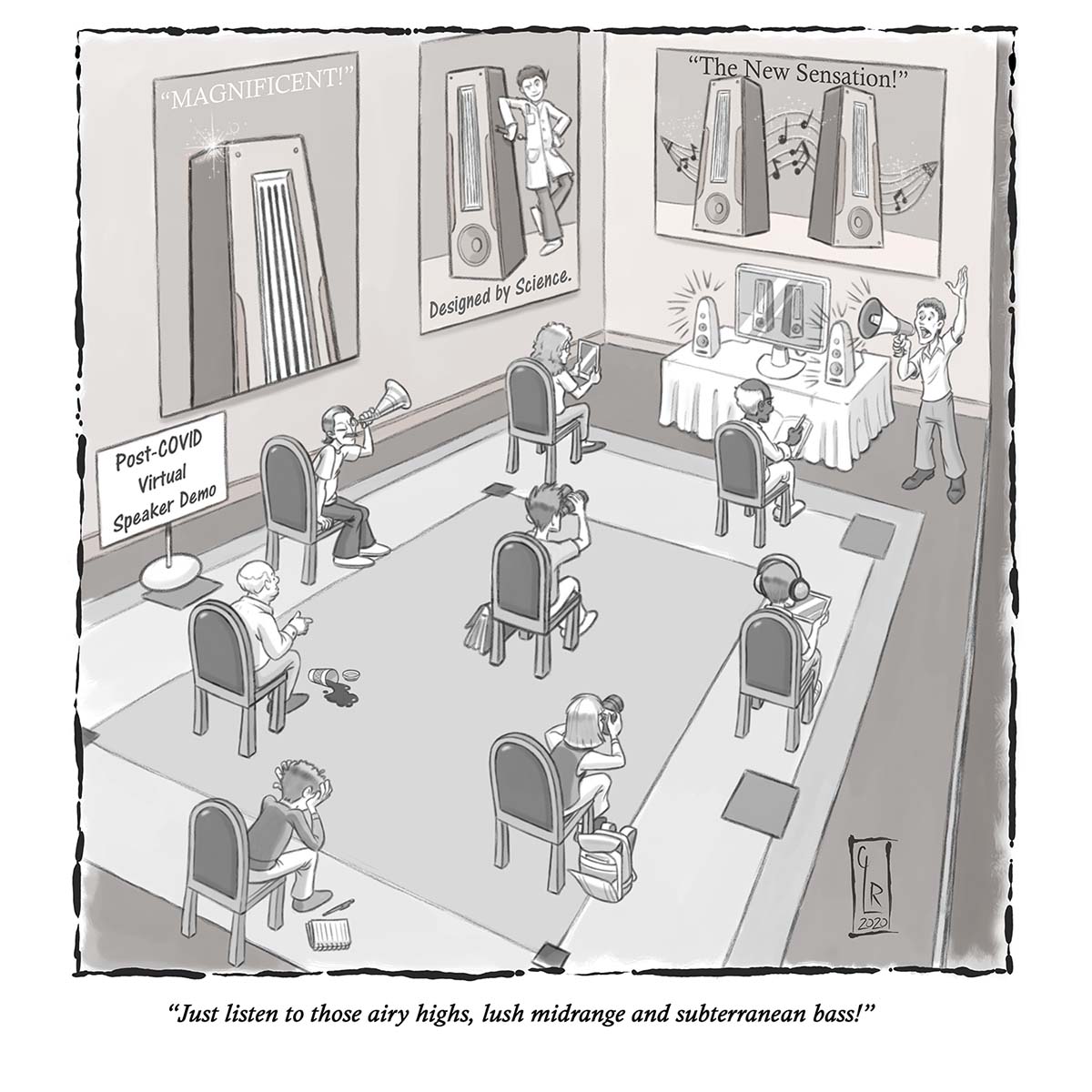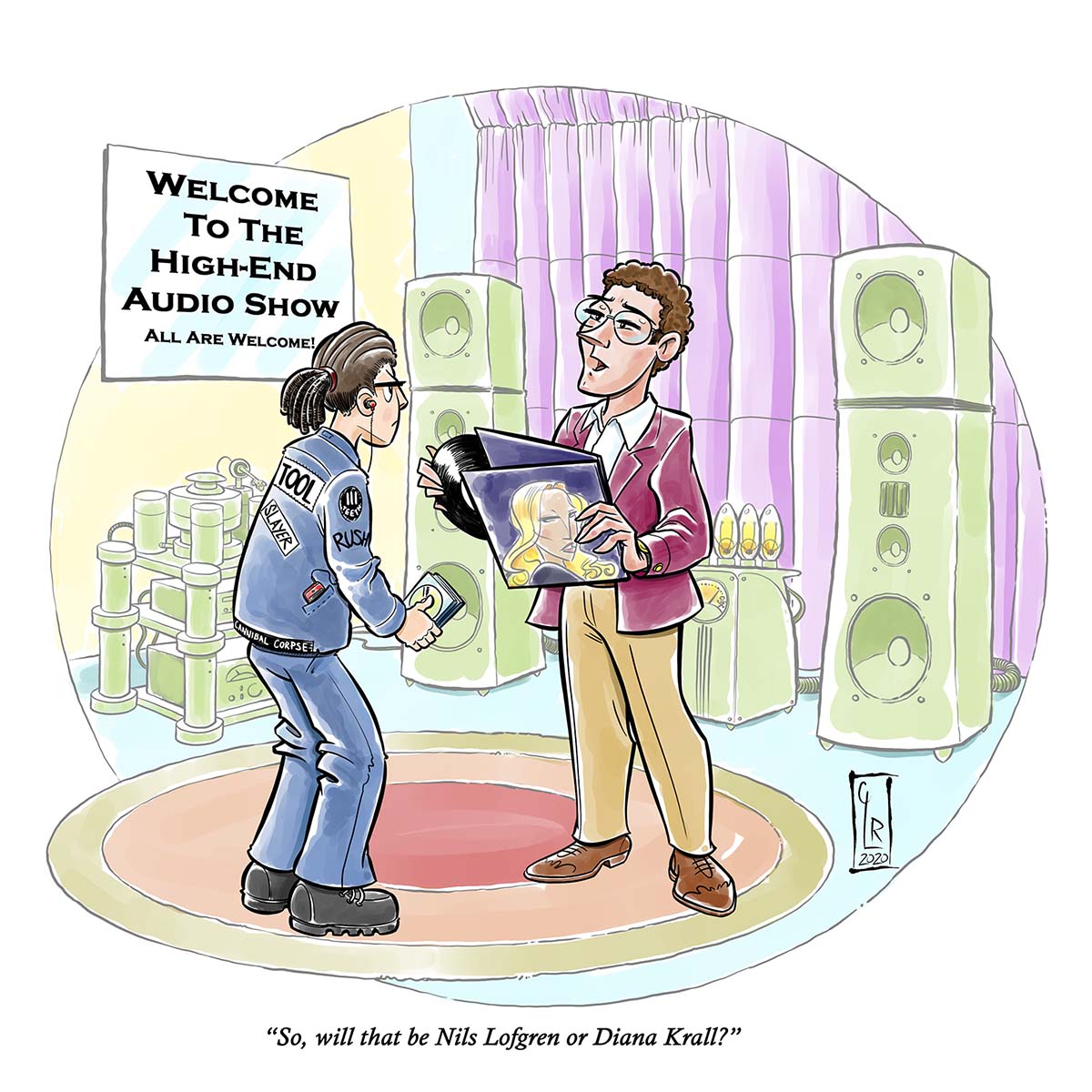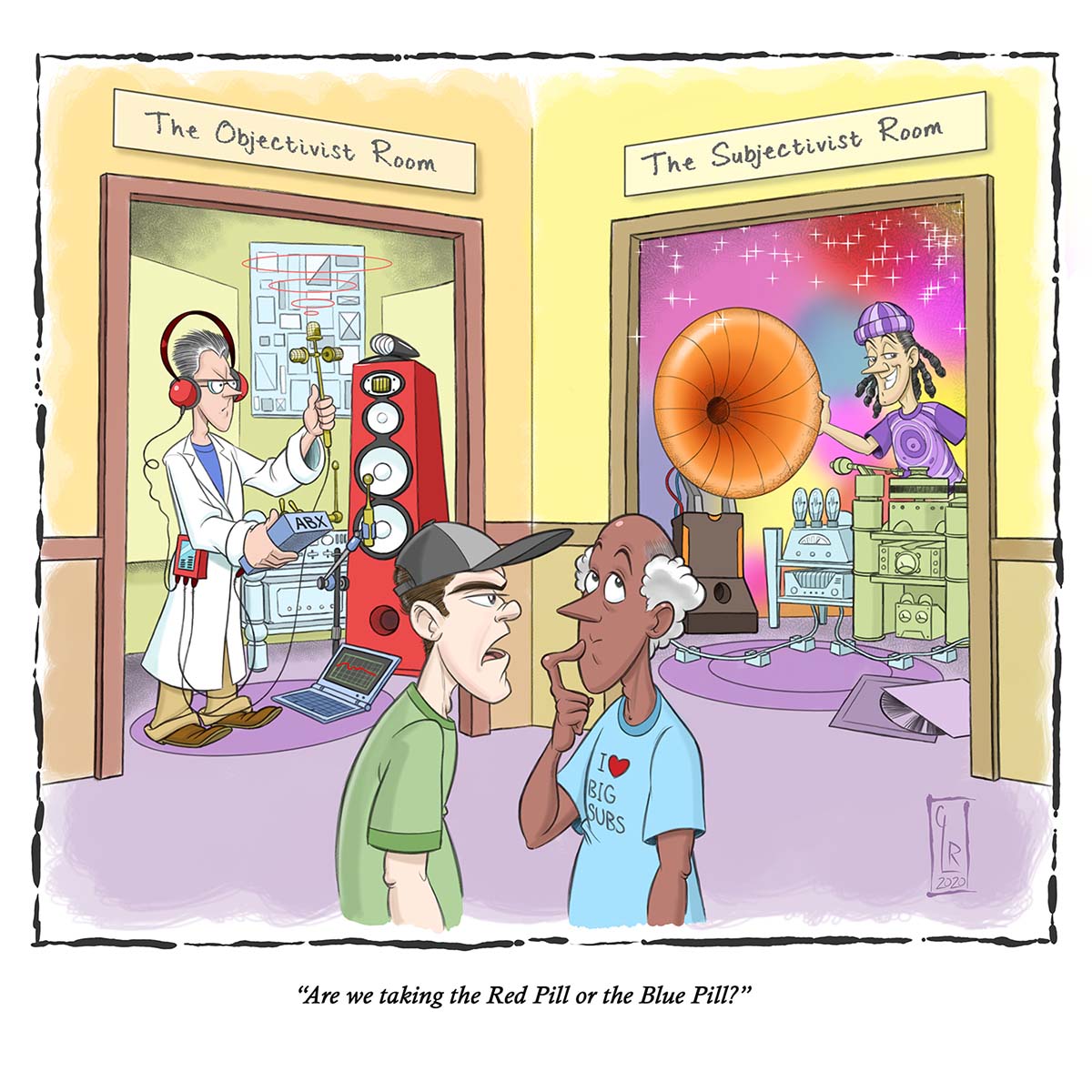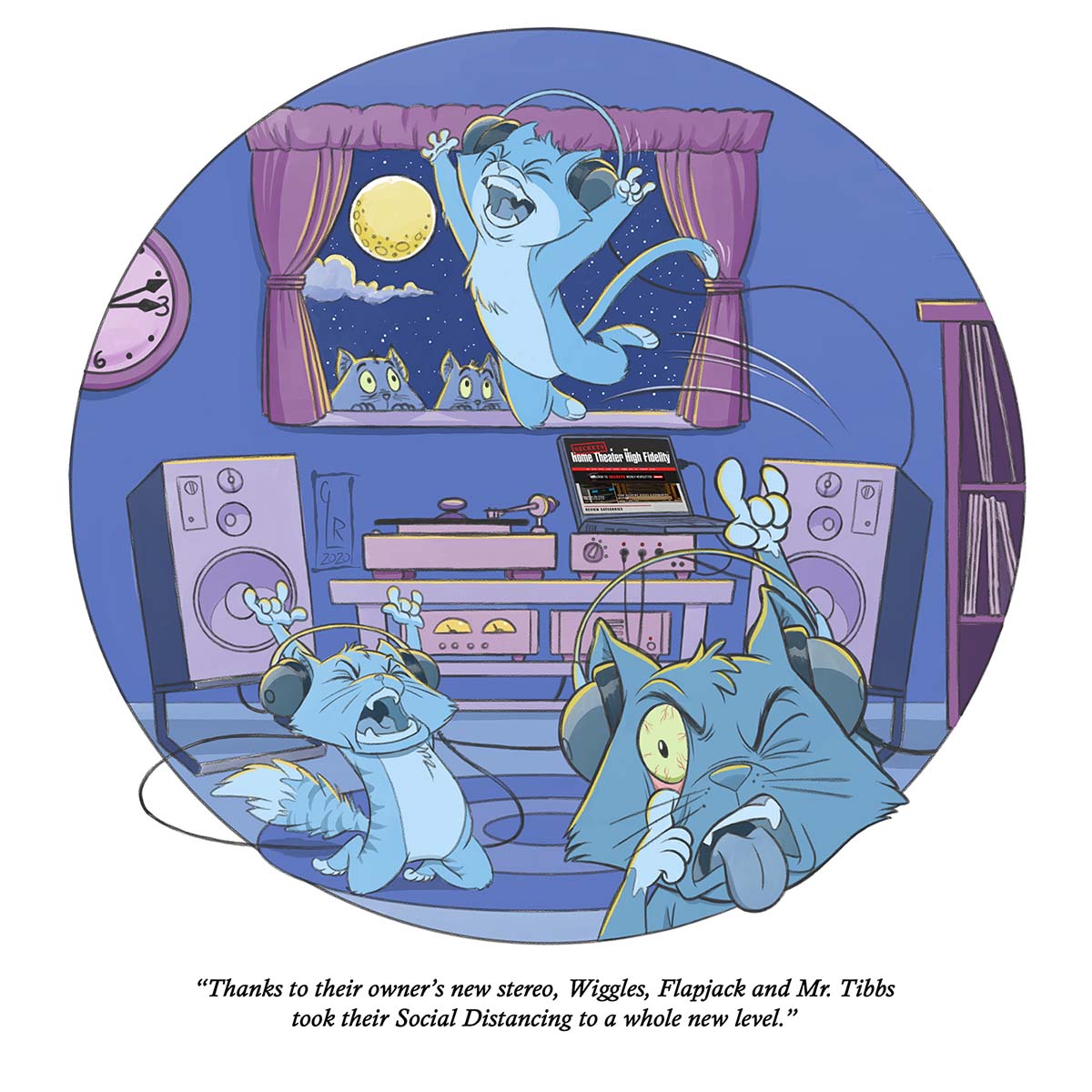Dear Audio Community, Get Your Head Out of Your…

o we are now in the early part of 2022, and after two-plus years of COVID-induced hibernation, we are starting to see and feel some signs of normalcy returning… hopefully. In the meantime, Spring is starting to make itself felt in most places and it feels like a time of renewal in many respects. As such, I feel like I need to get a few things off my chest. Perform a kind of therapeutic cleansing. A detox if you will, of some of the audio-related things I’ve heard and observed which may or may not have gotten under my craw over this past period of pause.
Audio Shows in 2022

Yet sooner or later that will come to an end and there will be other things that will return to fight for those disposable dollars. What happens then? I remember having a discussion with a particular high-end speaker manufacturer on the subject. This company makes very well-respected active loudspeakers. They were of the opinion that modern audio shows were pointless, set up at a show is never ideal, and in the end, did not result in any significant increase in sales for them. I argued that may be so but what about for publicity? They aren’t the largest manufacturer in the world or a household name in speakers so where and how would people be able to experience their products outside of a select few audio dealers? The company rep maintained that shows were still irrelevant. I replied, frankly I personally would not have been able to experience your products at all if I hadn’t been to the Munich show or RMAF. At both those shows, I spent a fair amount of time listening to the company’s speakers and came away very impressed and I knew for myself that yes, these speakers were worth all the hype that had built up around them. Slightly taken aback he replied, well did you buy a pair? No, I said, I can’t afford them, yet. But someday I might. More importantly, though, it established a quality benchmark in my mind, both for the brand and the particular speakers in question. One that I would compare other top-notch speakers to. That is what an audio show is all about! Where else can a bunch of like-minded folks gather in good cheer and listen to a broad variety of equipment?

Reviews
Well, maybe I do understand why. There is always some overly opinionated know-it-all with generally bad manners that feels compelled to spout off. In this Internet age, it’s not something solely exclusive to audio. But we like it when readers respond to our reviews and as a reviewer, it’s incumbent on me to respond to questions, take accountability if I’ve missed something, dispense comment moderation when appropriate, and outright ban people if need be. That’s part of the gig. Otherwise, reviews without the ability for readers to comment seem largely self-serving.
The CDs vs LP vs Streaming argument
Digital downloads make up 4% of total revenues, and something called “Sync” makes up 2%. All physical media sales accounted for 11% of total revenues, a total of 1.6 billion dollars. Of that figure, $1 billion is from vinyl sales while $584 million is from CD sales, with the remaining $35 million coming from music video and other physical media sales. On the face of it, vinyl is generating almost twice as much revenue as CD is, so one could assume that vinyl must be a more popular format.
Not so fast. Vinyl moved 39.7 million units altogether while CD sold 46.6 million units. So CD was statistically more popular than LP selling more physical units yet LPs generated more money in total sales. Understandable since single LPs retail for around $20 to $25 compared to a single CD which costs between $10 to $15 these days. So vinyl is not a more popular format than CD but it is a cash cow any way you slice it as new LP sales have steadily increased over the last dozen years. As a matter of fact, all levels of physical media, including CDs, have seen growth year over year. So to burst another bubble, physical media isn’t quite so dead either. And we’re not even touching on the used CD and LP market in this discussion.

Do measurements really matter?

At Secrets, we perform bench tests on as many products that we review as we can. We are unable to bench test every product simply because of logistics, but we do our best. We consider them to be the ultimate proof of performance. These bench tests are completed after we organize our subjective findings.
What measurements won’t reveal is if you will ultimately like a piece of gear once you get it into your room and into your system. They won’t tell you if you like how your speakers look or if the build quality will give you that certain pride of ownership that you’re after, or even if you like the way they sound, even if all indications say you should. What I can tell you is that looking at measurements is a part of the equation. An important part, but just a part. To me, this seems obvious, basically common sense. I don’t know why this same subject keeps coming up over and over again. Sometimes I think audiophiles (who are very passionate people) like to engage in drama. It’s 2022, enough with the drama! Stop trying to make audio an all-or-nothing, my-way-or-the-highway affair. Be civil. Lighten up and enjoy your music, enjoy your systems, and let other folks do the same.
